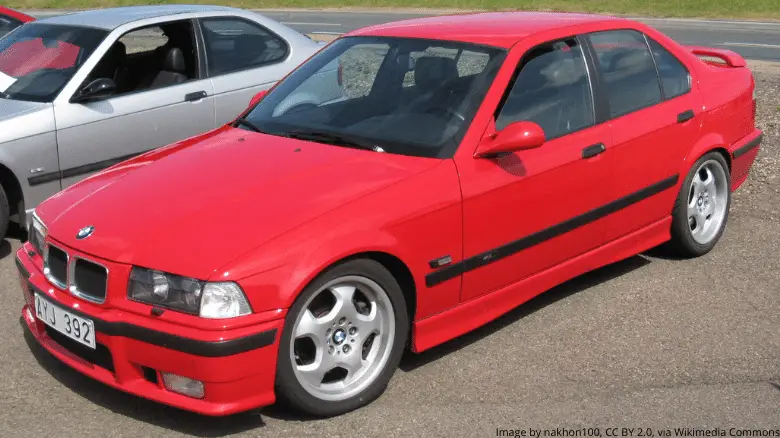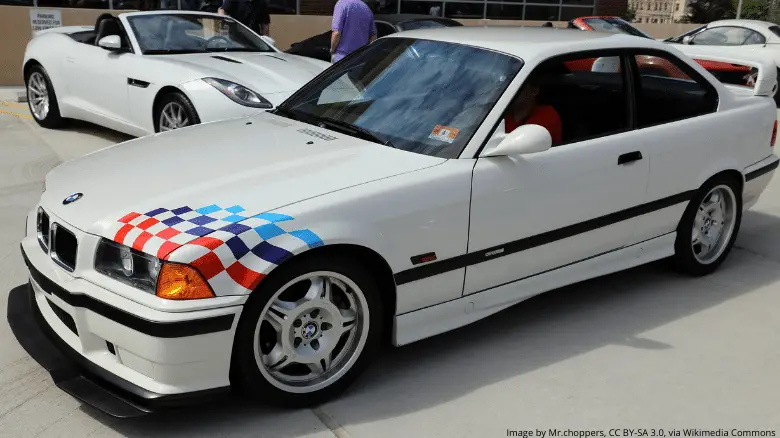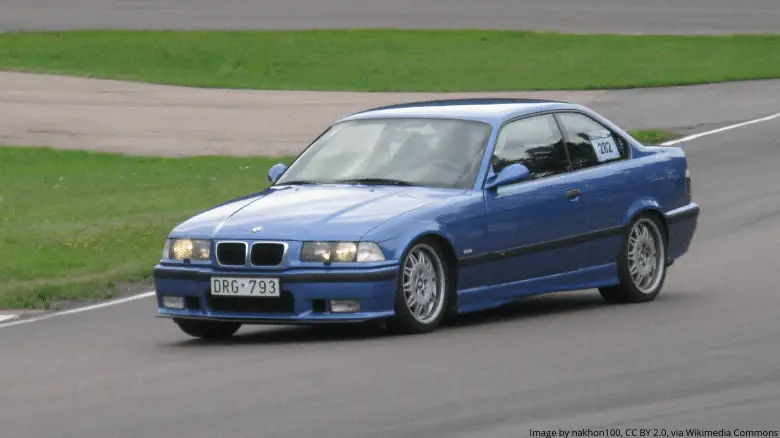The BMW E36 M3: Everything You Need to Know

Adam Chinn
Founder, The Car Investor
The BMW E36 M3 stands as one of the most celebrated sports cars of the 1990s, representing a pivotal moment when BMW transformed the M3 from a homologation special into a proper performance icon.
Produced from 1992 to 1999, this generation of M3 laid the foundation for everything that followed, combining razor-sharp handling with everyday usability in a package that still captivates enthusiasts today.
What Makes the E36 M3 Special?
The E36 M3 marked several firsts for BMW's M division. It was the first M3 powered by a six-cylinder engine, the first offered in multiple body styles, and the first built on what could truly be considered a mass-production scale.
More importantly, it established the template for the modern M car: a perfect balance of performance, practicality, and driver engagement.

Built by BMW's in-house motorsport division, BMW M, the E36 M3 was available in three distinct body styles: the iconic two-door coupé, a practical four-door sedan, and an elegant convertible.
Each variant shared the same fundamental DNA - exceptional handling courtesy of near-perfect 50/50 weight distribution, a well-tuned suspension system, and BMW's obsessive attention to chassis dynamics.
The Evolution Story: Standard vs EVO
Advertisement
The Original E36 M3 (1992-1995)
The initial E36 M3 arrived in 1992 with a naturally aspirated 3.0-liter inline-six engine. In European specification, this S50 powerplant produced 286 horsepower, propelling the car from 0-60 mph in just 5.7 seconds—impressive figures for the early 1990s.
The EVO Upgrade (1995-1999)
BMW wasn't content to rest on their laurels. In 1995, they introduced the E36 M3 EVO (Evolution), a comprehensively updated version that addressed virtually every aspect of the car's performance. The changes were substantial:
Engine Improvements:
Displacement increased from 3.0 to 3.2 liters
Power jumped to 321 horsepower
Introduction of BMW's double VANOS variable valve timing system
Chassis and Drivetrain Enhancements:
Six-speed manual transmission replaced the five-speed unit
Improved limited-slip differential for better traction
Sharper steering rack for more precise turn-in
Floating brake discs for improved heat dissipation
Weight-Saving Measures:
Aluminum door panels reduced overall weight
Refreshed lightweight alloy wheels
The result was a car that wasn't just faster in a straight line—it was more capable in every measurable way, cementing the E36 M3's reputation as a driver's car par excellence.
The North American Compromise
BMW initially had no plans to bring the E36 M3 to North America, but persistent pressure from enthusiasts and BMW clubs eventually changed their minds.
When the car finally arrived in 1995, however, American buyers discovered that their version was significantly different from the European model they'd been reading about in magazines.
The US-spec E36 M3 was powered by the S52 engine, which produced just 240 horsepower - 46 horsepower less than its European counterpart.
This power reduction was the result of stricter emissions regulations and BMW's desire to hit a more affordable price point of $35,000. Additional cost-cutting measures further differentiated the American car from its European sibling.
Many enthusiasts felt disappointed by these compromises, viewing the US-spec model as a diluted version of the "real" M3. Despite this, the car still found a devoted following and remains popular among American BMW enthusiasts today.
Production Timeline and Body Styles
Advertisement
The E36 M3's seven-year production run saw several important milestones:
1992: European-spec coupé launches
1994: Sedan and convertible variants introduced; US-spec coupé debuts
1995: EVO facelift arrives for coupé and convertible
1996: EVO treatment extends to sedan
1997: Sedan production ends
1998: Coupé production concludes
1999: Final convertibles roll off the production line
This timeline reveals BMW's strategic approach to the model range, with the coupé serving as the flagship throughout most of the production run, while the sedan and convertible catered to buyers seeking different balances of performance and practicality.
Rare Gems: Limited Edition Models
BMW created several special editions during the E36 M3's production run, each targeting specific markets or purposes:
European Specials
M3 GT (356 units): A homologation special painted exclusively in British Racing Green, designed to qualify BMW for racing regulations. The UK received 50 units with cosmetic upgrades only.
M3 GTR: The road-going version of BMW's German GT Touring Car Championship racer, representing the closest thing to a race car for the street.
North American Exclusives
M3 Lightweight (126 units): Painted in Alpine White with BMW Motorsport decals, this stripped-out variant prioritized weight reduction above all else, creating a track-focused machine for serious drivers.
Regional Rarities
M3 Evolution Imola Individual (50 units): A UK-exclusive finished in BMW's striking Imola Red, making it one of the rarest E36 variants.
M3-R (15 units): The ultimate rarity from Australia, available only to buyers with racing licenses.
Canadian Edition (45 units): Euro-spec cars legally imported to Canada, each bearing a commemorative plaque.
These limited editions command premium prices today and represent the pinnacle of E36 M3 collectibility.

Ownership Reality: Reliability and Common Issues
Advertisement
The E36 M3 can be a reliable companion when properly maintained, but like any performance car approaching 25-30 years old, certain issues are worth monitoring:
Common Concerns
VANOS System: The variable valve timing system, particularly in EVO models, can develop problems over time. Symptoms include rough idle and reduced power.
Cooling System: Aging plastic components in the cooling system are prone to failure, potentially leading to overheating if not addressed.
Electrical Gremlins: Various electrical issues can develop, from window regulators to dashboard pixels.
Suspension Bushings: Normal wear items that affect handling precision when they deteriorate.
A comprehensive service history is crucial when buying any E36 M3, as proper maintenance makes the difference between a rewarding ownership experience and an expensive nightmare.

Investment Potential and Collectibility
The E36 M3 has transitioned from used sports car to modern classic, with values reflecting this evolution. Several factors drive its collectible status:
Rarity Factors
While 71,242 E36 M3s were produced - making it relatively common among M cars - attrition has taken its toll. Many examples have been lost to accidents, neglect, or modification, making clean, original examples increasingly scarce.
The breakdown by body style reveals interesting rarity patterns:
Coupés: Most common (majority of production)
Sedans: 12,603 built
Convertibles: 12,114 built
In the US market, manual transmission examples are particularly rare, with fewer than 5,000 shipped.
Value Trajectory
Prices have been steadily climbing, driven by:
Increasing recognition of the E36's significance in BMW history
Growing appreciation for naturally aspirated engines
Nostalgia among buyers who came of age in the 1990s
Relative affordability compared to earlier M cars
European EVO models command the highest premiums, followed by rare limited editions and low-mileage examples in desirable colors.
Why the E36 M3 Matters
The E36 M3 represents a sweet spot in automotive history - the last generation before electronic aids became commonplace, yet sophisticated enough to deliver modern levels of performance and refinement. It proved that a sports car could be track-capable while remaining livable as a daily driver.
Its influence extends far beyond its production run. The E36 established the formula that BMW continues to follow today: take an excellent base car, add a high-revving engine, tune the suspension for maximum engagement, and create something greater than the sum of its parts.
For driving enthusiasts, the E36 M3 offers an increasingly rare experience: a car that demands involvement, rewards skill, and connects driver to machine in ways that modern electronics often mask. It's this purity of purpose that continues to attract new generations of fans, ensuring the E36 M3's place in automotive history.
The Bottom Line
Whether you're a longtime BMW enthusiast or someone discovering the brand's performance heritage, the E36 M3 represents an essential chapter in the M car story.
Its combination of accessible performance, timeless design, and growing collectible status makes it an compelling choice for anyone seeking a classic sports car that can still thrill on back roads while appreciating in value.
If you're fortunate enough to own one, treasure it. If you're considering buying one, act thoughtfully but don't hesitate - clean examples become scarcer and more valuable with each passing year.

About the Author
Adam Chinn is the founder of The Car Investor, combining his passion for classic cars with data-driven investment strategies to help collectors maximize their returns.
View all articles →Related Articles

Volvo 850 T-5R: The Sleeper That Shocked the Performance World
The Volvo 850 T-5R and 850 R have evolved from unconventional performance cars to cherished modern classics, representing one of the most successful transformations of a conservative brand into a genuine performance force.

Alfa Romeo 147 GTA: The Beautiful Lunatic That Defied Logic
The Alfa Romeo 147 GTA stands as automotive proof that passion can triumph over practicality, creating one of the most characterful and increasingly valuable hot hatchbacks ever built.

Will the Jaguar F-Type Become a Classic?
The Jaguar F-Type represents a fascinating case study in modern classic car potential. Launched in 2013 as Jaguar's spiritual successor to the legendary E-Type, the F-Type marked the British marque's return to dedicated sports car manufacturing after a 40-year hiatus.
Advertisement